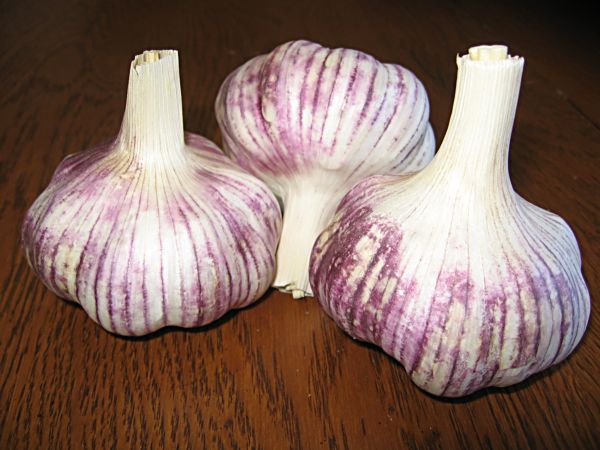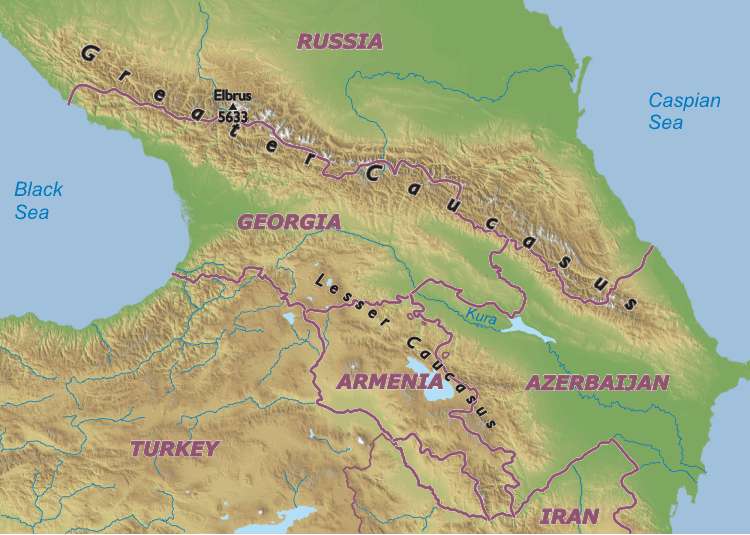There are two distinct types of garlic. Hardnecks and Softnecks. The hardnecks were the originals, derived from their wild predeccessors. The softnecks have developed over the years through a process of breeding hardneck varieties, selecting the ones that have softneck traits (no scapes, several small cloves per head, and mature more quickly) replanting those, and gradually moving towards a softneck variety.
All garlic is classified as Allium Sativum. From there there, the two subclasses are – Hardneck, (Ophioscorodon, Ophios for short) and Softneck (Sativum).
As of 2003, the consensus is that there are 10 distinct varieties of garlic. 5 disctinctly hardneck, 3 ambiguous hardnecks that often produce softneck kin, and 2 varieties of softneck. (Listed below)

Hardneck Garlic Varieties (Allium Sativum Ophioscorodon)
1. Purple Stripe
2. Marbled Purple Stripe
3. Glazed Purple Stripe
4. Rocambole
5. Porcelain

Ambiguous Hardnecks (Allium Sativum Ophioscorodon)
6. Creole
7. Asiatic
8. Turban

Softneck Varieties (Allium Sativum Sativum)
9. Silverskin
10. Artichoke
History
This story was first told by Bob Anderson of Gourmet Garlic Gardens.
As the story goes, every single garlic cultivar (there are hundreds) evolved from the ten varieties listed above. And all of the 10 came from the Caucasus Mountains between the black sea and the Caspian sea.

Over time, each cultivar has developed their unique characteristics by encountering different growing conditions including:
- Soil types
- Rainfall
- Temperature
- Altitude
- Length and severity of winter
Arrival in the US
Up until 1989, the majority of the garlic in the world resided in Europe and specifically originated from the Caucasus mountain range
which divides modern day Russia and Georgia.
When the scant few varieties did make it into the United States, they usually came via Polish, German, and Italian immigrants.
The USDA knew that there was a treasure trove full of garlic varieties waiting for them in the Caucusus Mountains. They consistently asked the Soviets for permission to come get some. But, as it turns out, along with harboring the worlds most prized garlics, the Caucusus Mountains, were also home to a few of Russia’s missile bases and their spaceport. Not exactly a place that our good Soviet friends were keen on letting us “come get some garlic.”
In 1989, as the Soviet Union disintegrated, the USDA was finally invited to collect the garlic varieties. So off our government agents went, along with an armed Soviet convoy to get the prized garlic. Only allowed to travel at night (to keep from seeing military secrets, or the lack thereof), they went from village to village along the Silk Road. In each village they purchased every variety they could find and subsequently named many of them based on the village they were purchased.
Upon arriving to the US, armed to the teeth with their precious garlic, our USDA heroes worked a deal with a handful of growers to grow out these new varieties. The basic gist of the deal was, the growers would grow out a field and split the bounty with the USDA.
Over the next few years, the growers continued to replant their varieties and traded amongst each other. And this way, slowly but surely, the North American supply of garlic has grown.
25 years later, we still have a shortage in the garlic market. Many of the garlic growers will not accept any orders until after their garlic is harvested, cured, and ready for sale in late August. When they finally do open their doors to sell their garlic, it is not uncommon to sell out within two weeks, and a few even sell out under 48 hours!
If you’re interested in buying some seed garlic this season, check out what our growers have before they sell out.
